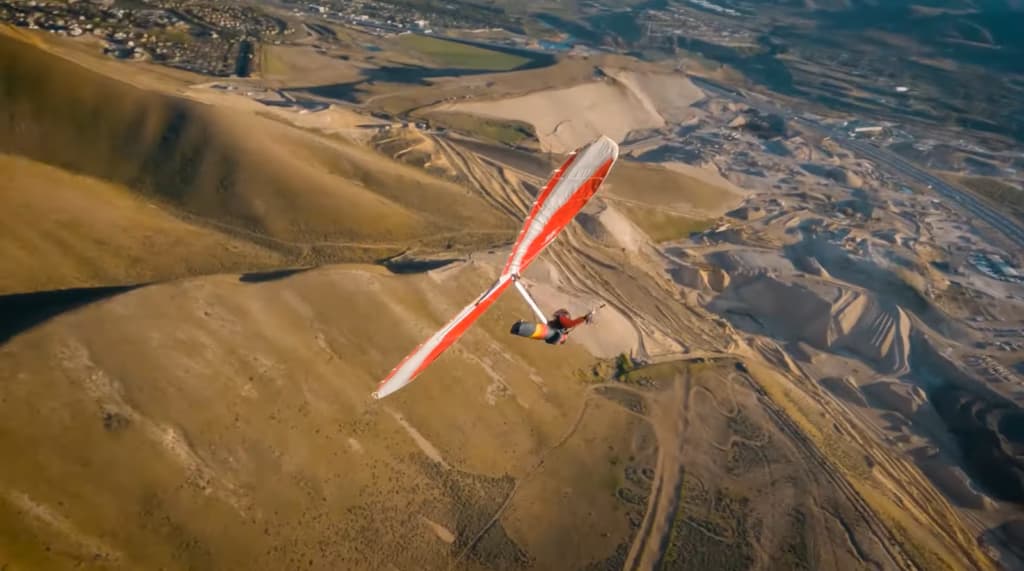Exploring the Key Parts of a Hang Glider
In the intriguing realm of hang gliding, the construction and materials used in the gliders are subjects of constant curiosity. Whether you’re a seasoned pro or a budding enthusiast, obtaining knowledge about the materials that make up these magnificent flying machines is not only interesting but vital. Here’s an in-depth exploration into what constitutes a hang glider.
Flight Notch, your ultimate hang gliding resource, offers elaborate insights into the exciting world of hang gliding, including the best hang glide spots, ideal equipment to use, and explanations on the mechanics involved. Among these revelations, understanding the composition of a hang glider is paramount. As we explore the key parts of a hang glider, discover Connecticut’s top spots for thrilling hang gliding adventures.
Breaking Down Hang Glider Components
Hang gliders may seem complex, but they are notably less intricate when compared to airplanes. Their simplicity does not compromise the extensive functionality embedded in their unique structure, comprising several key elements like the fabric, frame, tethers, and harnesses. Let’s dive into the distinctive properties and roles of these components.
| Component | Material/Structure | Functionality | Comparison with Airplanes |
|---|---|---|---|
| Wing | Fabric (Dacron or Mylar) with hot press polyester resin impregnation | Lightweight and flexible, allows easy liftoff, less likely to cause damage during flight | Unlike airplane metal wings which are heavy and require more energy to lift off |
| Frame | Lightweight aluminum tubing or aluminum alloy, sometimes carbon fiber or wood | Provides strength and stability while keeping the aircraft lightweight | Airplanes typically use heavier materials, requiring more thrust for lift |
| Tethers | Strong nylon | Connects hang glider to pilot’s harness, supports weight of aircraft and pilot | Not typically applicable to airplanes |
| Harnesses | Straps and buckles with a reserve parachute | Secures pilot to hang glider, includes reserve parachute for emergency descent | Parachute as a safety measure is unique to hang gliding |
The Wing
- A hang glider wing incorporates fabric, usually an interlaced fiber of dacron or mylar;
- This fabric undergoes a meticulous procedure of resin impregnation, where a hot press polyester resin seeps into the tightly woven fibers, creating a lightweight, flexible wing fit for flight;
- This fabric wing grants easy liftoff due to its minimal weight, unlike airplane metal wings which require substantial thrust for takeoff;
- Moreover, the fabric wing provides reduced damage potential during in-flight impact.
The Frame
- An aluminum alloy or lightweight aluminum tubing usually makes up the frame of a hang glider;
- This frame grants the glider structural strength and stability while maintaining a low weight;
- High-end hang gliders may incorporate carbon fiber frames, boasting enhanced strength and reduced weight but at a significantly higher cost;
- In retrospective and even some contemporary models, the frames are contrived from wood, providing the required rigidity while being both cost-effective and light.

Tethers or Cables
- The tethers, otherwise known as the cables, are the links that attach the pilot’s harness to the hang glider;
- Made of robust nylon, the tethers can bear the weight of both the pilot and the glider;
- These tethers must offer supreme strength to safeguard your flight journey.
Harnesses
- The pilot’s harness is pivotal for the safe attachment of the pilot to the hang glider;
- It incorporates various straps and buckles that ensure a secure fit onto the body;
- Additionally, the harness houses a reserve parachute as a critical safety measure during emergencies.
The parachute provides a safety net, allowing the pilot to make a safe descent back to the ground in case of device failures. Therefore, an operable parachute is a mandatory prerequisite for every hang gliding expedition.
Distinction Between Hang Gliders and Parachutes Material
While both hang gliders and parachutes incorporate fabric in their structure, key differences set them apart. Parachutes utilize a heavier material to bear the impact of a person’s landing, while hang glider fabrics are less heavy-duty.
Parachute wings are rounder due to the need to create multi-directional lift to slow down descent. Contrastingly, hang glider wings only need to create forward lift. Furthermore, hang gliders usually require assembly by the pilot, while parachutes are often pre-assembled.
Reasons for Fabric Construction of Hang Glider Wings
The fabric construction of hang glider wings, as opposed to metal, is informed by various reasons. Besides the lightness of fabric, which facilitates easy liftoff, fabric also presents less risk on impact during flight compared to metal. Furthermore, the flexibility of the fabric allows effective control of the hang glider, a feat not provided by rigid metal.
The Making of a Hang Glider
Hang gliders, more often than not, aren’t sold fully assembled. Buyers or pilots are usually entrusted with the assembly. Though this might seem daunting, the assembly process is straightforward, requiring utmost precision for safe flying. Seasoned pilots can effortlessly assemble a hang glider in a few hours. For beginners, a couple of days might be necessary.
Like any piece of equipment, hang gliders require regular maintenance to ensure their longevity and safety. This includes checking for any signs of wear and tear on the body, particularly the fabric and the frame, and making sure the harness and tethers are in prime condition. The parachute should also be inspected regularly and replaced when necessary.
Hang Gliding Safety Tips

Safety should always be at the forefront when hang gliding, from the proper assembly and maintenance of the glider to wearing the appropriate gear and checking weather conditions. Always adhere to safety guidelines and avoid flying in adverse weather conditions.
Hang gliding is an exhilarating sport that allows individuals to experience the thrill of flight. Understanding the components that make up a hang glider not only enhances this experience but also plays a significant role in ensuring one’s safety. Bearing in mind the importance of each component, regular maintenance, and safety guidelines, you’re on your way to many more exciting flights.
Conclusion
Understanding the intricate components that constitute a hang glider is crucial not just for its assembly and maintenance, but also for ensuring safe and enjoyable flights. The unique characteristics of each component, from the lightweight fabric wing to the rigid frame and sturdy tethers, all contribute to the glider’s impeccable performance in the sky. Just as important is understanding the distinction between hang gliders and parachutes – a comprehension that further solidifies the safe practices for the sport. So, whether a seasoned flyer or a novice enthusiast, knowledge about a hang glider’s make-up enhances appreciation for this exciting sport and fosters safer, more thrilling flying experiences.
